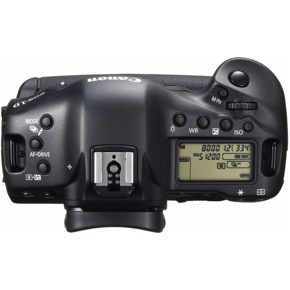|
|
The Canon 1Dx, current flagship of Canon's DSLR line, is the ultimate stills camera, an excellent filmmaker's tool and very near to perfect for the multimedia photographer.  This review of the 1Dx is based on a week's experience testing the camera with a variety of Canon's excellent L-series lenses. Particular time was spent with the versatile EF24-105mm f4L IS, an image stabilized lens that has become a mainstay in the kit of many current Canon users. Not only does this lens allow handholding with stills using low shutter speeds, if you are using an EOS camera in movie mode it provides very good stability for holding your shot steady longer. Over the years I have written my views on several pieces of gear, and none of them have been written with overly detailed technical specifications. The same approach is taken in this opinion of the 1Dx. There are several other excellent articles by knowledgeable technical reviewers should you require this kind of information. My opinions are based on the perspective of a professional user in the field where results are what count the most, not technical arguments. My main focus is if it allows me to actualize what I see or imagine. Nothing else matters. My need these days is for a tool that is relatively light, compact and allows capturing both top quality still and motion images. The Canon 1Dx was announced in late 2011, but did not begin shipping until mid 2012. It is the latest evolution of the Canon 1-series professional camera bodies, and this version takes the line to new heights. With a full frame 24x36mm CMOS sensor at 18.1 megapixel resolution and offering up to 14 frames per second performance, Canon has balanced the 1Dx to offer specs that appeal to users of both the full frame 1DsMark III and APS-H sensor 1D Mark IV. Even though it has a smaller sensor (18 Mp) compared to the 1Ds Mark III's 21 Mp, Canon has increased the size of the photosites on the sensor, resulting in better image quality. With two powerful DIGIC 5+ processors and one DIGIC 4 processor, the 1Dx is a powerhouse that uses its extra heft to produce images that are tonally smoother, sharper and with less noise than any previous Canon DSLR.  The first thing you notice when you pick up a 1-series Canon is how amazing the build quality is. The 1Dx feel like it is cut from a solid block of metal. The camera is made with magnesium alloy, and covered with a rubberized compound that allows a secure and comfortable grip. It is weather sealed to protect the innards so that professional photographers can work in extremes of weather and hostile environments. With a current version L-series lens attached, it is possible to keep working when even weather reporters flee for cover. This rugged build comes at the cost of extra weight and bulk, and a hefty price tag. The 1Dx currently sells for $6799 at most retailers. On the back of the 1Dx the new 3.2" LCD screen is incredibly bright and detailed, offering the ability to zoom in and see the results of a shot quite a bit. Adding an accessory like a Zacuto finder and Guerrilla Plate allows the screen to be used as a viewfinder for movie shooting. Unlike the 5D Mark III and 7D cameras, there is no dedicated button for activating the live view movie mode. The 1Dx allows programming in the custom functions to select turning off access for still shooters who do not use the live view or movie functions of the camera. One of the amazing features of the 1Dx is its ability to fire 12 frame per second image bursts, and up to 14 FPS when the mirror is locked up. These extra frames can mean the difference between getting the critical shot or missing it when action is unfolding at high speed. Compared to its little brother 5D Mark III, with up to 6 FPS continuous capture, the 1Dx is a monster. Use of UDMA 7 high speed cards in the dual compact flash card slots is highly recommended for top performance. The 1Dx has 61 zone auto focusing, which is controllable by selecting different points or modes depending on how you are shooting. I find using AI Servo tracking activated via my thumb, using the center block focusing point and isolating the shutter release for taking the image a very efficient way to work. Normally I would use One Shot AF but this camera feels right using the above described method. This is all up to user preference. Regardless of favored method, the 1Dx has you covered for whichever way you choose to go. The extra power driven by the three processors allows the autofocus system to deliver a very high percentage of tracking shots in even low light conditions. For example, I mounted an EF 50mm f1.2L lens, set it to max aperture of 1.2, ISO @ 3200 and proceeded to follow a moving child in tungsten light using AI Servo and motor set to high speed. The 1Dx just worked...the percentage of useable photos was high enough for me to not hesitate using this method again if the situation requires it. Having a tool that responds without hesitation and as if wired to your senses is incredibly liberating.  The image quality of the files straight out of the camera is superb. I found that it was possible to make a JPEG directly from a RAW file without much work. The dynamic range of both still and motion files is very wide. For movie files it held detail in both the highlights and well into the shadows using the standard neutral profile. The sharpness and overall quality is the best I have seen from any HDSLR to now. Canon has implemented big changes for movie shooting in this latest generation of HDSLR. Gone is the limitation of shot duration that caused 1D Mark IV, 5D Mark II and 7D owners to limit takes to under 10 minutes. The 1Dx (and 5D Mark III) allows shooting for up to 29.59 minutes, great for interviews, as it is no longer necessary to stop and start continuously. It has two new SMPTE-compliant timecode modes, Rec Run and Free Run. There are two new H.264/MPEG-4 AVC based codecs, All-i and IPB compression. Movie modes are: 1920x1080 @ 24, 25 and 30 FPS; 1280x720 @ 24, 25, 30 and 60 FPS. Audio is Linear PCM.  The biggest disappointment for me of the 1Dx is the lack of a headphone monitoring input. Canon instead added a Gigabit Ethernet terminal to facilitate wireless transmission of files for sports and news photographers who are the primary users of the 1Dx. In my opinion, the adding of a headphone jack is crucial for multimedia photographers and documentary filmmakers choosing to use in camera sound in the field. Even with all the superb features on this camera the primary one for me is the high ISO low light capabilities. It has opened up a new world of image making possibilities. The standard ISO range is from 100 to 51,200. The extended ISO range is 50 to 102,400 and 204,800. That is simply mind boggling considering where we are coming from. I found that up to ISO 8,000 the noise is simply not even worth considering. At ISO 25,600 it is grainy but possible to be cleaned up by using a noise reduction program of your choice. Above ISO 25,600 would only be used in an emergency, in situations where a noisy image trumps other considerations. During nighttime testing outside I ramped the ISO to around 12,800. The files were very useable and were resolving good detail across the board. At 25,600 the sensor on the 1Dx was seeing things that my eye could not and holding the highlights. I was shocked at what I was able to capture in approximate darkness. The application of this high ISO capability means it is possible now to use a lens like the image stabilized EF 24-105mm f4 L in low light situations, which is very liberating. I also tested the Canon EF 35 f1.4 L and EF 50 f1.2 L and when working near or at widest aperture could maintain a decent shutter speed in very low light.  My overall opinion of the 1Dx is that it offers a host of features that can allow a skilled photographer or filmmaker to take their game to another level. The reason is due to the responsiveness of this tool in a multitude of situations, including times when environmental conditions would destroy lesser built cameras. The high frame rate capability, autofocus tracking, high ISO range and overall image quality makes it easy to give an unqualified top rating to the 1Dx. However, for photographers not needing built-like-a-tank and high frame rates, the excellent 5D Mark III might be a smarter choice, with its higher resolution 22 Mp sensor, lower cost, a headphone input and very quiet silent shooting mode. The movie files out of the 5D Mark III are softer than those out of the 1Dx but can be post sharpened nicely. All the extra processing power provided by those three DIGIC sensors built into the 1Dx means that it can do things in-camera that others cannot. Roger M. Richards is a contributing editor to The Digital Journalist. He is a filmmaker-photographer and his Web site is http://rogermrichards.com blog comments powered by Disqus
|








